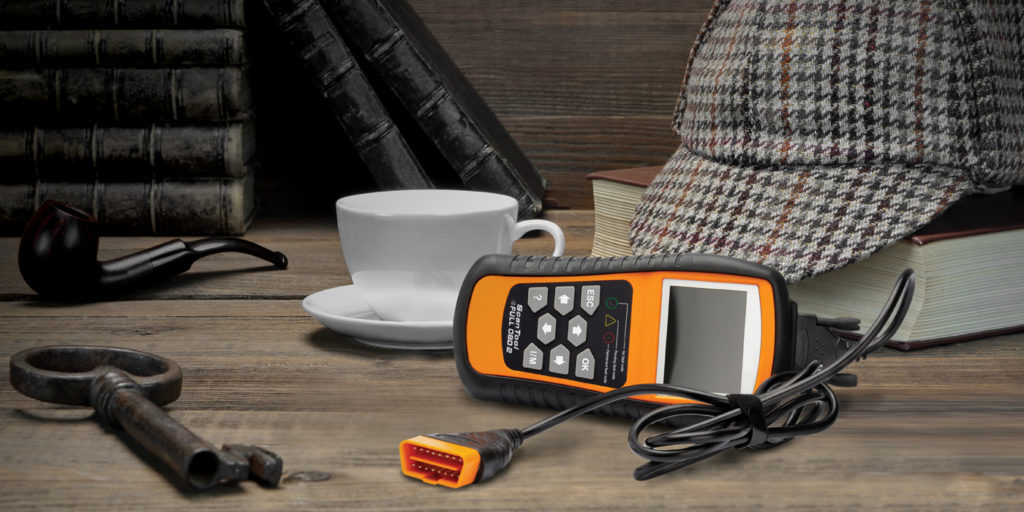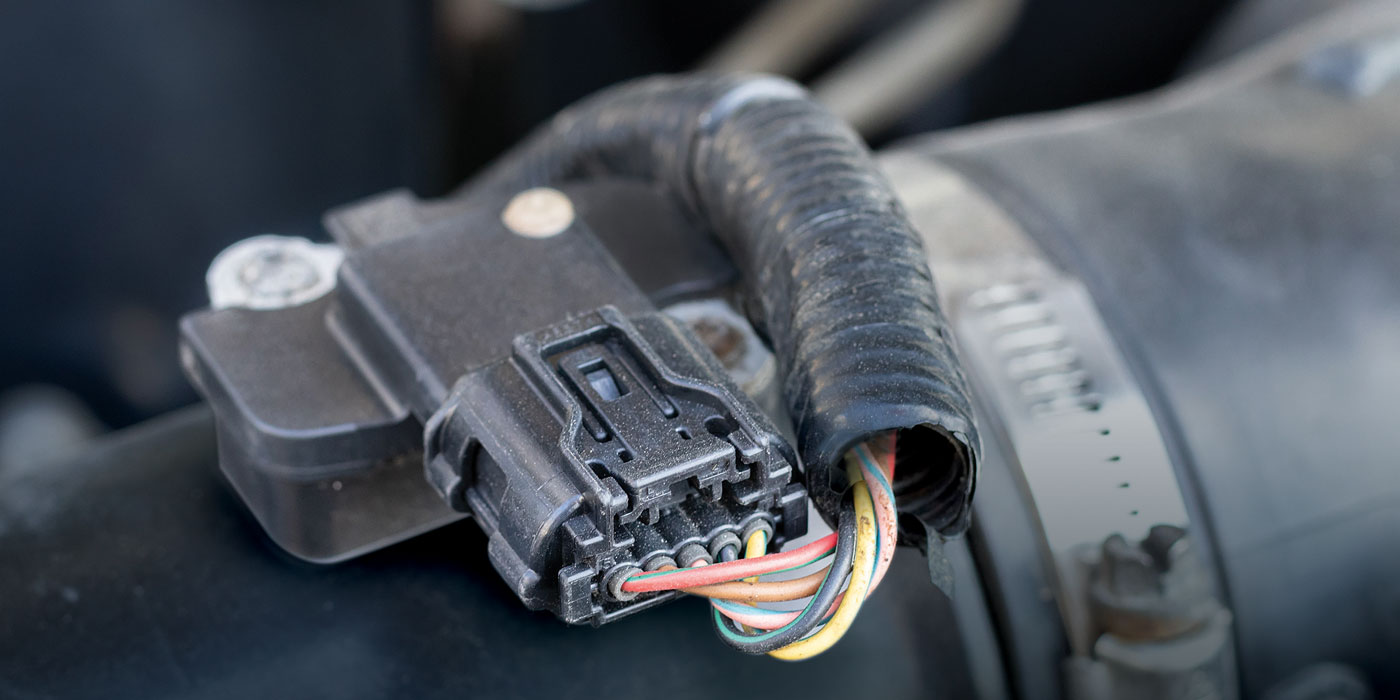When the “Check Engine” light comes on, it’s time to retrieve the codes and get to work. The first thing to do is hook up your code reader, look at the codes and write them down for accuracy and future reference.
OBD II codes are all standardized by the Society of Automotive Engineers (now known as SAE International), which simplifies what the codes mean and how to deal with them. There are four categories of trouble codes.
Powertrain Codes
The most common codes are the powertrain (“P”) codes. This group of codes includes engine, transmission and emission systems.
For example, a P300 code is called a random misfire code. It means that one or all the cylinders aren’t contributing as much power as the others.
A P303 code means that Cylinder 3 isn’t contributing enough. The P303 is easier to deal with than the P300, because you can concentrate your diagnosis on Cylinder 3. If it’s a relatively low-mileage engine, you could talk to the customer and ask if all the normal scheduled maintenance has been performed. This is a great sales tool and it’s the correct way to address performance concerns. I won the national Echlin Ultimate Tune Up Contest using this approach.
If you still haven’t identified the source of the problem, it’s time to start evaluating the spark quality right at the end of the spark plug wire using a simple spark tester. This tool is calibrated for different engine types and comes with simple instructions.
I can’t tell you how many times I’ve asked customers, “Is the spark quality good?” They always say, “Oh, it’s good.” I think they say that because they don’t understand what I’m asking. After a brief explanation of what that means, they usually buy the $10 tester and go back and test the spark properly. Many times the return to buy the ignition coil, spark plug wires or spark plugs. Once you go through that process, that customer is yours for life.
Body Codes
The next type of codes are the body (“B”) codes. This group of codes includes climate-control systems, lighting and airbags.
The body codes are a little bit tricky to sell parts with, because most of them don’t have maintenance items associated with them. Airbag codes have a lot of liability associated with them and are best left to the body shop or dealer. You can sell cabin filters and lighting items if the code is related to that system.
Chassis Codes
Chassis (“C”) codes includes antilock brakes and electronic suspension and steering systems.
This is where the big sales opportunities are. The antilock warning light is the best diagnostic tool there is. It breaks down in two ways. First, after you start the vehicle, the light should go out in about 30 seconds; that means the module did its self-test of the entire system and everything is working.
The next step is to start driving the vehicle and see if the light comes on. If it does, that means one of the sensors isn’t reading for some reason. I’ve seen this happen when an incorrect brake rotor or CV shaft is installed that didn’t have the tone ring for the ABS on it.
This is one of those times when you have the conversation with the customer. Ask them, “Did the light come on after any work was done on the vehicle?” If you see the light bulb come on in the customer’s eyes, you just made another customer for life. Another good question to ask is, “When the light comes on while driving, do any of the wheels start locking up?” That could indicate a faulty sensor behind that wheel.
Electronic suspension codes are straightforward to diagnose. The most common code is a pump code. Usually the customer has heard unusual noises coming from the pump and it needs to be replaced. Whenever the pump is replaced, the entire system needs to be checked for leaks or other malfunctions that cause the pump to work itself to death.
Electronic steering codes deal with electronic rack-and-pinion problems. They occur when the steering control module sees that the steering-angle sensor and the electronic rack-and-pinion position are out of phase.
The most common condition is the rack-and-pinion assist motor is failing. The common symptom is lack of steering assist. The customer will comment on the steering wheel being difficult to turn. Sometimes when the steering column has been worked on, the steering-angle sensor may become damaged, so as always have the conversation with the customer about what was done to the car before the problem surfaced.
Network Communications Codes
The last group of trouble codes are the network communications (“U”) codes. This group includes the controller area network wiring bus and modules.
The network lets all the modules talk to each other and work together. There aren’t many sales opportunities with the U codes because they deal with the network wiring and modules. If a customer comes in with a U code, you’re best bet is to refer them to a qualified repair facility.
One big thing to watch out for here is when a customer comes in and buys a code reader from you and wants to return it because it won’t read codes. What that means is that the communication network is down and can’t talk to the code reader. In our store, the policy on code-reader returns is that if the customer insists, we will return it to the manufacturer to be checked out. That helps us avoid financing their experiment.
Vehicle-Specific Codes
One class of OBD II codes that you never hear about are the manufacturers’
vehicle-specific codes. They may start with a 1, 2 or 3. These codes aren’t in the SAE lineup of codes and can be referred to the dealer for diagnosis.
Prior to OBD II, the only thing that would turn on the “Check Engine” light was an open circuit. The problem there was that the vehicle could run poorly, and the “Check Engine” light may not light up. That was a big problem, because the fuel mileage was down, and the air was getting severely polluted.
A common fix back in those days was to take the “Check Engine” light bulb out of the dashboard. If the light did come on, mechanics needed a different scan tool for each different manufacturer’s vehicle. That meant many vehicles weren’t getting repaired. I want to give a shout out here to General Motors, because they always gave access to the data streams so we could repair their vehicles all the way back to when vehicles first had on-board computer systems.
All of these on-board computer systems work together now to provide us with great-running, long-lasting vehicles. The air is cleaner, and the fuel mileage is way up.
I have a 1995 Toyota Tacoma pickup that was the first Toyota to come with OBD II. It has 256,000 miles on it, and aside from the paint fading, it’s running just like it did the day I bought it. I always recommend an inexpensive code reader and Google to all my regular customers. I tell them it’s easier to read the code at home and put the code into Google to see where to go with the problem.
Charles Dumont is an ASE-certified counter professional with NAPA Auto Parts in Shelton, Washington. A regular contributor to Counterman, Dumont is the 2020 NAPA/ASE Parts Specialist of the Year.














